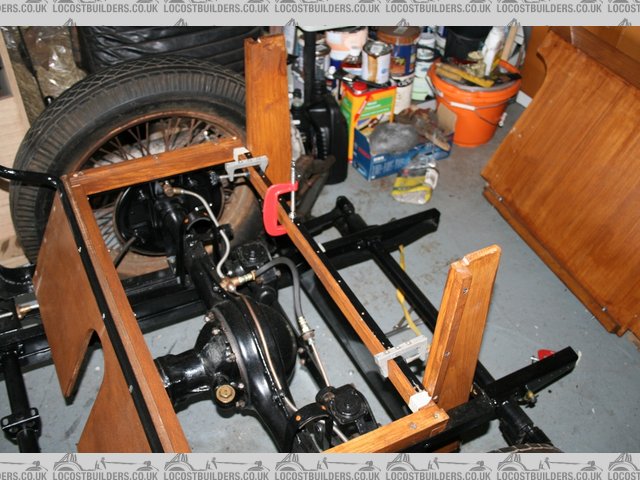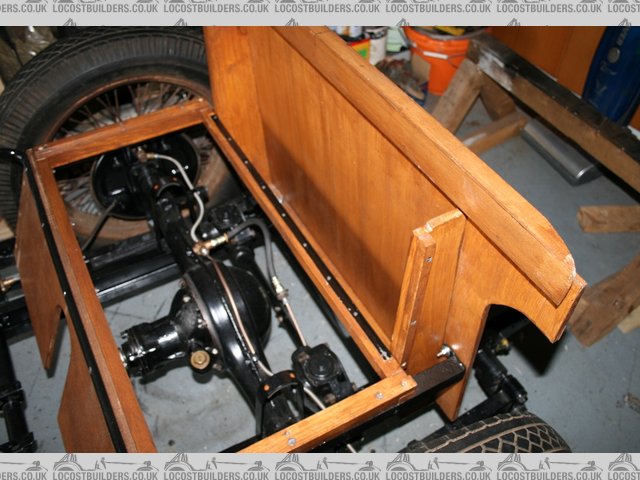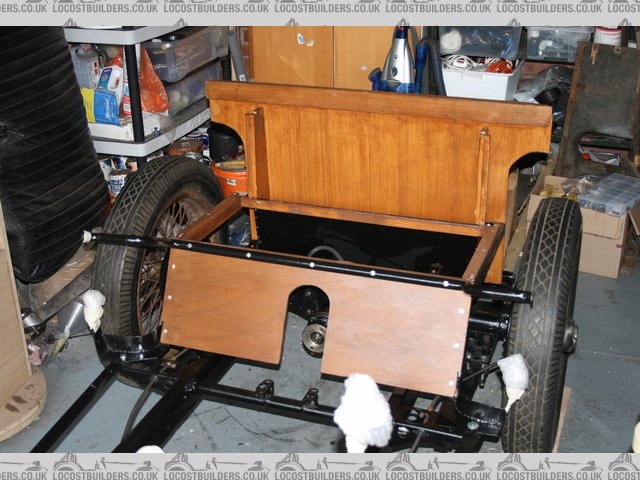First of all, I stripped the body irons back to bare metal and then painted them with POR15. I made sure that the rolling chassis was level sitting on the garage floor by placing thin bits of ply wood under the relevant wheels as my floor is not exactly flat. Next I bolted the irons to the chassis. As you can only use the front two pairs of mounting points (the rear two being through the wood frame itself - see later), I found that it was easier to position accurately by bolting a scrap of wood across the rear of the irons at the correct spacing otherwise there are too many degrees of freedom to play with. The dimensions given in TC Forever are correct for the mounting points and can be set very accurately with a bit of fiddling.

I managed to recover the threaded blocks that recess into the side members of the diff cover frame which are used to hold the diff cover in place. These were also painted in POR15.

After that, I fitted the diff ramp, the diff cover frame and the bulls horn (which had been painted in POR15 like the body irons). By the way, all of the wood was liberally coated in two coats of wood preserver and then two coats of protective wood stain. I found that some of the wood needed to be trimmed here and there to get the accuracy that I was after. Interestingly, the 5 holes in the bulls horn were not in the exact places as described in TC Forever. It looks to me as though the original builders just knew that it needed 5 approximately equally spaced holes and drilled them by eye, so my advice is don't assume that every measurement in TC Forever is correct without checking against your car first.






